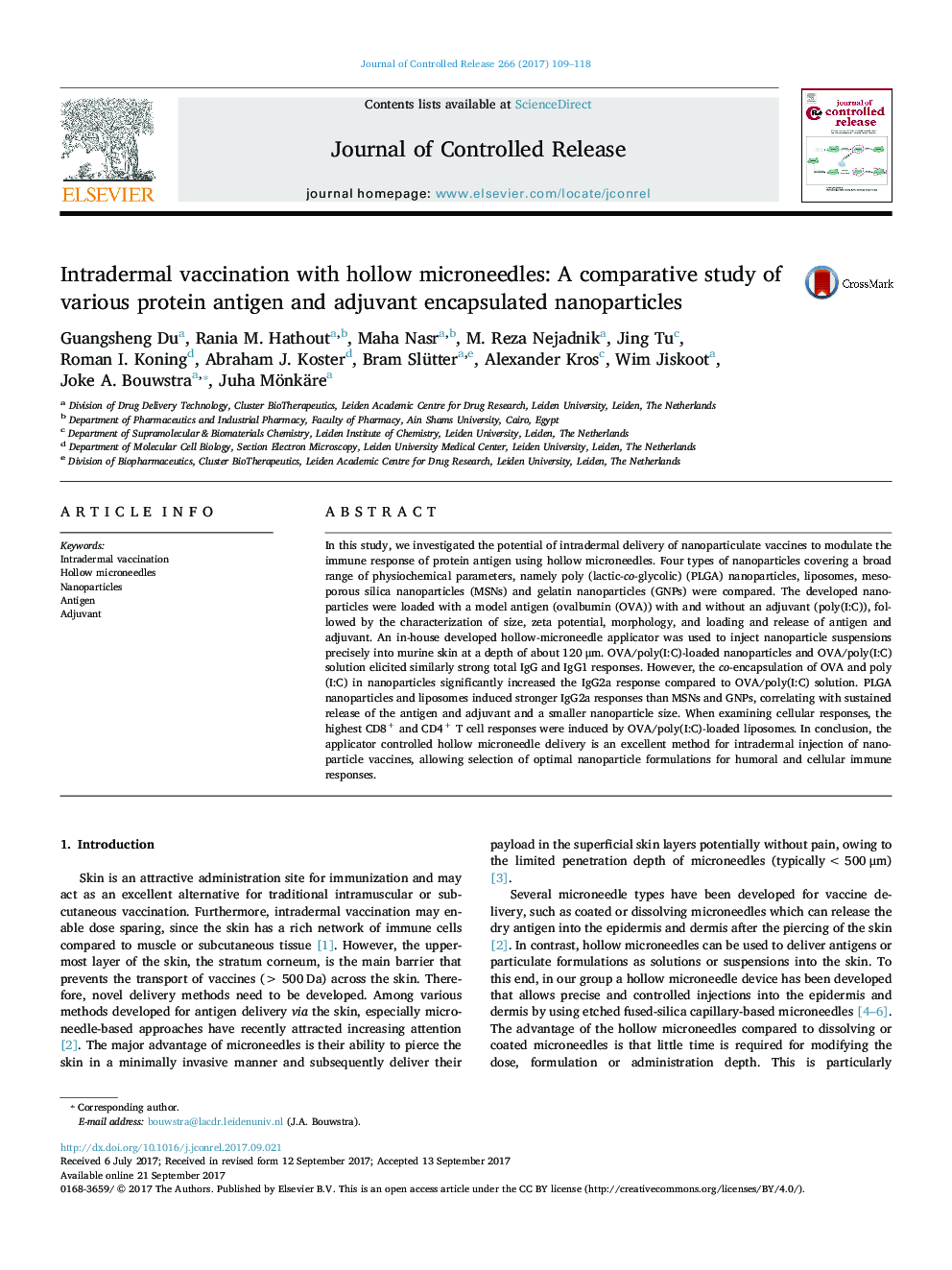| Article ID | Journal | Published Year | Pages | File Type |
|---|---|---|---|---|
| 5433334 | Journal of Controlled Release | 2017 | 10 Pages |
In this study, we investigated the potential of intradermal delivery of nanoparticulate vaccines to modulate the immune response of protein antigen using hollow microneedles. Four types of nanoparticles covering a broad range of physiochemical parameters, namely poly (lactic-co-glycolic) (PLGA) nanoparticles, liposomes, mesoporous silica nanoparticles (MSNs) and gelatin nanoparticles (GNPs) were compared. The developed nanoparticles were loaded with a model antigen (ovalbumin (OVA)) with and without an adjuvant (poly(I:C)), followed by the characterization of size, zeta potential, morphology, and loading and release of antigen and adjuvant. An in-house developed hollow-microneedle applicator was used to inject nanoparticle suspensions precisely into murine skin at a depth of about 120 μm. OVA/poly(I:C)-loaded nanoparticles and OVA/poly(I:C) solution elicited similarly strong total IgG and IgG1 responses. However, the co-encapsulation of OVA and poly(I:C) in nanoparticles significantly increased the IgG2a response compared to OVA/poly(I:C) solution. PLGA nanoparticles and liposomes induced stronger IgG2a responses than MSNs and GNPs, correlating with sustained release of the antigen and adjuvant and a smaller nanoparticle size. When examining cellular responses, the highest CD8+ and CD4+ T cell responses were induced by OVA/poly(I:C)-loaded liposomes. In conclusion, the applicator controlled hollow microneedle delivery is an excellent method for intradermal injection of nanoparticle vaccines, allowing selection of optimal nanoparticle formulations for humoral and cellular immune responses.
Graphical abstractDownload high-res image (148KB)Download full-size image
